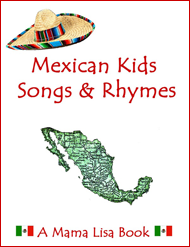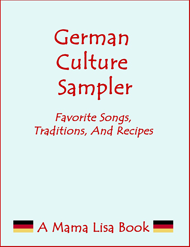In many parts of the world, the foods eaten on New Years Eve and New Years Day have important symbolic meanings. These symbols seem to fall into several major categories.
The first class symbolizes financial prosperity. This type of food is round like coins. Often, the dish will be round beans, like lentils, that will expand when it cooks, symbolizing expanding fortunes. Another financial symbol is food with big green leaves, representing paper money. The green may also be for growth. Foods like this are cabbage, collard greens and kale. Golden colored foods are also good for financial rewards in the New Year.
The second type of New Years food symbol represents the hope of having food on the table throughout the year. Pork is one important symbol of eating well year round. It’s also a sign of prosperity. In the olden times, if your family had a pig, you were doing well!
In some countries, actually having food on your table and/or plates at the stroke of midnight is a sign that you’ll have food throughout the year.
A third symbol involves eating sweet food in order to have a sweet year. In some countries people bake a coin in a sweet cake and the person who gets the coin will have good luck throughout the year. In Spain, Portugal, and parts of South and Central America, 12 sweet grapes, one for each month of the year, are eaten at midnight. The hope is to eat 12 sweet grapes to have 12 sweet months!
Fish is thought to symbolize good luck in many countries.
Another symbol for good luck involves eating food in a ring shape – like doughnuts or ring shaped cakes. This represents coming full circle to successfully complete the year – that’s good luck.
In Japan, long Buckwheat Soba noodles symbolize long life. Just don’t break them while you’re eating them!
Here’s a list of some symbolic food types and the places where they’re eaten for the New Year. Feel free to let us know what’s eaten for New Years in your country, in the comments below.
Round Food (Like Coins for Monetary Luck)
Italy, Brazil & Germany (Lentils)
Germany (Pancakes)
Philippines (Round Fruit)
Southern US (Black-eyed Peas)
Green Leafy Vegetables (Like Paper Money for Monetary Luck)
Southern USA (Collard Greens & Turnips)
Denmark (Kale)
Germany (Sauerkraut)
Golden Food (Like Gold for Monetary Luck)
Southern USA (Corn Bread)
Pig (Symbol of Plentiful Food in the New Year)
Hungary (Roast suckling pig with a 4 leaf clover in its mouth)
Italy (Cotechino con lenticchie – pork sausage with lentils)
Germany (Kassler mit Sauerkraut – financial luck)
Pennsylvania Dutch (USA – Pork with Sauerkraut)
Austria
China
Food on the Table or Plate at Midnight (Symbol of Plentiful Food in the New Year)
Germany
Philippines
Sweets (Symbolic of a Sweet Year or Good Luck)
Hungary (Doughnuts)
Greece (Round cake called Vasilopita – made with a coin baked inside – whoever gets the coin is lucky throughout the year)
Israel (Jewish New Year – Apple dipped in honey & grapes)
India
Egypt (Candy for kids)
Korea (Sweet Fruits)
Norway (Rice Pudding with an almond inside – good luck to the one who gets the almond)
12 Grapes at Midnight (Symbolizing 12 Sweet Months)
Spain
Portugal
Mexico
Cuba
Ecuador
Peru
Ring Shaped Food (Good Luck)
Mexico (Rosca de Reyes – Luck)
Netherlands (Olie Bollen – Doughnut)
Fish (Symbol of Good Luck)
Germany (Herring & Carp)
Poland (Pickled Herring)
Denmark (Boiled Cod)
Italy (Dried Salted Cod)
Japan (Red Snapper – Pink is a lucky color)
Vietnam (Carp)
China
Sweden (Seafood Salad)
A Happy, Lucky and Prosperous New Year to All of You!
Mama Lisa
Many thanks to Ed Gawlinski for pointing out that they eat lentils in Italy for the New Year, which lead me on this long quest that resulted in this discussion!
UPDATE: You can read about symbolic food for the New Year in Iran on Mama Lisa’s World Blog.
This article was posted on Saturday, December 29th, 2007 at 11:48 pm and is filed under Amish, Armenia, Bermuda, China, Countries & Cultures, Cuba, Cuisine, Denmark, Ecuador, Egypt, El Salvador, Greece, Holidays Around the World, Hungary, India, Ireland, Israel, Italy, Japan, Lesotho, Mexico, Netherlands, New Years, Norway, Peru, Poland, Portugal, Recipes of the World, South Korea, Spain, Switzerland, USA, Vietnam. You can follow any responses to this entry through the RSS 2.0 feed. You can skip to the end and leave a response. Pinging is currently not allowed.

























December 30th, 2007 at 7:51 pm
very nice mama, yum yum, thanks for all the great food info
December 30th, 2007 at 11:44 pm
In Japan, mochi rice “cakes” are also eaten for New Year’s. I am half Japanese and here in America my little family has been fortunate to have always been able to find mochi to cook, baked or in soup, for New Year’s good luck. The very gooey mochi stretches like rubber when bitten into, the long strings symbolic of long life.
December 31st, 2007 at 2:49 pm
That sounds yummy! I’d love to try one of your recipes!
February 1st, 2008 at 10:01 pm
As Chinese New Year is coming ( next week), there’s something interesting to note here about New Year’s food. In Tianjin, China, people will make vegetarian dumplings apart from the meat ones for the New Year’s Eve and they are about to eat the vegetarian ones especially at midnight, usually with the fireworks outside the windows. The vegetarian dumplings signify a coming year which is very clean, with no accidents, no serious affairs, etc. “Su”, as vegetarian, implies something simple, calm. The contrary will be “Se” as Colour/Lust, or “Rou” as Meat/flesh/therefore lust.
Quite interestingly, in other parts of China this habit is not often observed. Not even in Beijing, it seems to me, though just 120 kms away.
February 1st, 2008 at 10:18 pm
That’s very interesting. Are they made with any specific ingredients like tofu or bok choy?
February 5th, 2008 at 6:48 pm
Not only! As far as I remember, it’s made with smoked tofu, chinese cabbage (or bok choy), Guozi (which is a Tianjin saying, equivalent of Youtiao in Beijing, meaning “Fried Sticks”. It’s made of flour), rice noodles, coriandre, bean curd, sesame oil, hua cai (which is what your friend hong kong’s black sea moss, Fat Choy), black mushrooms and so on. As Emperor Liang Wu Di decided for all the Chinese monks that ginger, garlic and onion are not “Su”, therefore stimulating or lustful, there shouldn’t be these three things in the vegetarian dumplings. Some put omelettes in it. All cut into small pieces. Think of the colours (black, yellow, green, transparent, red…) That’s something a poor and imaginative person can think of to compete with meaty ones, as he can’t afford the latter. I’ve always admired the imagination of Chinese cuisine exactly because people have been so lack of highly nutritious “modern” food that they just had to be creative.
And why not carrots and beans? Or whatever you think delicious and compatible? And who cares if we put some ginger or spring onion in it if we just want some more tastes? I know my family did and many did so, too. Just have some fun and be reasonable. Buddha won’t mind.
Happy Ratty New Year to all!
December 28th, 2008 at 3:43 pm
[…] you’re interested in learning about other New Year’s traditions, you can read about Symbolic Foods Eaten Around the World for New Years. Fell free to share your traditions with us in the comments […]
December 4th, 2009 at 6:39 pm
In the Southern US (Ozarks of Arkansas and Missouri) we do eat black eyed peas and greens (the greens aren’t as required), but we also eat hog jowl, which is like a very fatty bacon. It is absolutely required that black eyed peas and hog jowl be eaten at the mid day meal to ensure luck through the year. I’d never heard of them being representative of money, just that eating them is for good luck. You’ll have bad luck if you don’t eat them.
January 9th, 2010 at 11:16 pm
[…] can learn more about Symbolic Foods Eaten Around the World for the New Year on a previous blog post. Share on Facebook and other […]
January 12th, 2010 at 12:22 pm
[…] can learn more about Symbolic Foods Eaten Around the World for the New Year on a previous blog […]
September 10th, 2010 at 3:36 am
In Korea, people eat ‘Teok-kuk(sliced rice cake soup)’ for breakfast on New Years Day morning.
It has several meanings as follows.
‘Teok-kuk’ is white colored, which means rigidity and pure, as new years day is the first day of a year.
Also, as the ingredient is from long stick-shaped rice cake, it means that people will live long and healthy.
No matter where they live, I believe most of Korean families eat ‘Teok-kuk’ for New Years Day.
January 24th, 2012 at 8:02 pm
I’m from South Korea. We Koreans eat ‘Teok-kuk’ on New Years Day as Michelle mentioned above. Our family also prepare some beef rib called LA Galbi because they believe the bone in the beef represents the strong tradition of the family.They put the LA Galbi on the breakafast table in a hope that our famliy will be prosperous forever.
December 30th, 2013 at 7:00 pm
[…] and symbolism play important roles in celebrations around the world. On special occasions different countries use […]
December 31st, 2013 at 8:05 pm
Another example of pig in the Southern United States is hog jaw. I’m from Alabama, and we always have cornbread, collard or turnip greens, black eyed peas, and hog jaw. We also always put a coin in either the greens or the peas, and the person who gets the coin in their serving is supposed to be lucky and have success all year.
December 29th, 2014 at 12:45 am
[…] the world food and symbolism play important roles in New Year’s celebrations not just to celebrate but often to bring luck, […]
December 30th, 2015 at 5:15 am
[…] and symbolism play important roles in celebrations around the world. On special occasions different countries use […]
December 31st, 2015 at 1:45 am
[…] Symbolic Food eaten Around the World for New Year’s […]
December 31st, 2015 at 4:20 pm
Kim Wöng wrote, “The grapes thing is also prevalent in the Philippines due to Spanish influence.”